Will Schools Ever Be The Same?
Will schools ever be the same?
The coronavirus has altered many human institutions. It has altered human life. For centuries, people have gone to schools to learn and to gain knowledge, skills, and access to opportunities. The pandemic has exposed the weakness of our current day schools and also revealed their relevance and adaptability and flexibility. The pandemic has accelerated and amplified some changes in society and schools that have developed over time such as our dependence on computer technology to achieve school goals and aims.
This post intends to express the thoughts of one public school educator with experience in the field since 1985 and to the current pandemic impacted days of 2020. Pondering or predicting the future is a curious endeavor. In times of crisis and upheaval, even moreso. I wonder if post pandemic schooling will be the same as it was pre-pandemic. I wonder if there will be a post pandemic time at all. I wonder if schooling will adapt slightly to what we have known in modern times or if the essential structures of schooling will be forever markedly changed from this point on.
In writing this post I imagine a collection of similar posts by acting and active educators around the world. This gallery of pondering, wondering, predicting would be useful to my mind. So often, educators have others write and predict and guide for us and for schools. Sometimes by former educators or exclusively researchers or others interested but not directly active in the teaching profession. These expressed thoughts are of value indeed, however, I think of these active educator writing posts as a collective action with potential impact on the active educators as well as the society at large.
During my three plus decades as a worker in American public schools, I have observed a variety of changes in many aspects of the systems. There are certainly more computers and certainly access to information for all involved has been radically changed via the growth of the internet. I have experienced what I view as a state and federal governmental involvement in public schools that tended towards standardization and the narrowing of goals and aims of schools and school systems. In recent years, I have contributed to what I sense as an undoing of this three decade trend if not perhaps an awakening or renaissance of more human and progressive educational thinking and organizing that were common in previous time periods.
The last three decades have also produced a number of other changes as they relate to schools and the legal and political contexts they exist in. The society at large is significantly more litigious and risk averse. Although legal cases such as Brown v. Board of education established the end of de jure segregation in schools, de facto segregation has risen and in many contexts left more segregated schools in the wake. More children in public schools are poor now proportionately than thirty years ago and more children are second language learners of English. The role and appreciation for the job of teaching has changed significantly in these last thirty years in terms of the ways media and government either value or hold the profession in esteem. Unions and teacher unions have been broken in the majority of states in the last thirty years while local communities and families seem to continue to value and love their teachers perhaps now more than ever.
Years ago, my Ph.D. work at the University of California, Santa Barbara explored students, teachers and families engaged in an online project designed for the Library of Congress that supported learners as they explored the American Dream. Some writers both then and now said or say that the American Dream is dead. Others see it as enduring. When we look at statistics and social mobility through economic and other lenses some suggest that social and economic mobility has decreased in America these last thirty years and this certainly implicates schools as an essential variable in the process.
All said, the pandemic has kept many children and teachers away from face to face interactions and everything that this normally means in modern America. It has thrust our schools to attempt to perform our functions online, on the phone, or via document and materials exchanges. Many of our schools began this adaptation in March of 2020. Many continue in this manner to this day as we entered the 2020/21 school year. In the event that this virus and our ability to prevent it from getting masses ill and even dying remains similar to what we have been experiencing the past five months, I wonder what this holds for schools in the rest of the 2020s and beyond. I wonder if we will go back to the ways we used to do school. I wonder if we will adopt some of the ways we have adjusted to in the last five months. I wonder if over time the entire function and context of public schools will change in major ways.
What follows is a series of projections and suggestions. I wish educators around the world would write in the same way and I would try to read them all. Schools, so undervalued and misunderstood in the past thirty years from my point of view, might benefit as well as the societies they serve.
School facilities and safety practices should improve in the coming years. We have the knowledge and the means and this would be a much welcome change.
School and community nutrition and basic access to meals should improve in the coming years. We have the means and this would be a much welcome change. People should not go hungry in America.
Internet access and access to digital information and communication should improve in the coming years. We have the means and knowledge and this simple improvement would both challenge schools as seemingly unitary sources for learning as well as inspire them to adapt to the diverse needs of its children and citizenry.
Equity in education has always been a major issue in America. From the times, not that long ago, when slaves and women were banned from educational opportunities to modern times when real estate or zip code are profoundly linked to educational opportunity and educational quality. This pandemic and the civil unrest being expressed in the media and the streets of America and around the world are surely bringing greater momentary attention to educational equity issues but I’m not sure what the post pandemic, if there is one, holds for these equity issues in reality. If we get more kids online than ever before, that will be a boost for equity but we are unable to provide quality education in ways that improve our old outcomes, this may exacerbate our legacy of divide along the schoolhouse lines.
An even more dark projection might envision that the political will to have social institutions that are part of the public agora such as public schools, post offices, or hospitals might fade and seek to exist. If one imagines a public school system funded with significantly less money, say 50% or 25% or even none at all, could this be a post pandemic reality? I certainly hope not. I mention it, however, to make my note of the last thirty years of privatization of American institutions and the homogenization of many aspects of our culture and communities. When people get together in real face to face communities, even under pressures to standardize and factory-ize, American schools have sustained efforts and outcomes to be creatively responsive and different as the people and community they exist in. Borrowing from Yong Zhao’s work, it’s the messiness of our sausage making that has kept us creative and strong in spite of attempts to create a one size fits all American school.
Post pandemic schools should be able to offer many more teachers with many more skills and knowledge in interest in using digital tools to provide a “still human” education for children.
Post pandemic schools should be able to and be forced to think more clearly and well about what they want learners to do on campus and what they want them to do at home as it relates to their learning.
Post pandemic schools should be able to think much more deeply about the value and potential of children learning outdoors and from and with nature.
Post pandemic schools should be able to think much more deeply about what has always been true but is now abundantly and obviously apparent, that is, that children’s learning and development is built on a triangular relationship and set of communication pathways between the child, their schools, and their families. Our past failings to truly engage in more fruitful parent, child, school learnings have been deeply exposed. In many cases, however, our educators are doing everything they can to re-connect and more deeply connect with families.
Of course I am tempted to begin a long series of comments on pedagogy and curriculum and assessments that relate to what the pandemic has done and might do to and for schools. I will refrain for now I think. Writing this piece….or at least trying to start writing it has led me to believe that the most important contribution I can make at this moment is to ask a simple question and ask, encourage, challenge other educators to speak for ourselves. For too long, for myriad reasons we have allowed others to speak for us as we quietly just do the work we think is our best for children, family and community. To my mind, this cannot stand. In whatever media or social media or context educators choose, I think the thousands and millions of educators on the planet should let each other know their thoughts on whether schools will ever be the same post pandemic? Should they? Etc.. and let the world know what we are thinking in ways that extend far beyond the few soundbites cable television affords. It’s time for Back to School Nights (BTSNs) all across America. This year, many will happen online. I think it’s time for us all to go all the way back and all the forward to school and hold candid and lengthy discussions about our duty to protect and educate children and the next generation of Americans.
I don’t think schools will be the same post pandemic. They will make adaptations.
I hope they will continue to exist as free publicly funded schools.
I hope they will better serve American children, families, and communities.
I hope they will provide more equitable opportunities for all children regardless of race, real estate, or family income.
More importantly, for as long as I do this work, I will continue to take actions to achieve these goals as I have been these past three decades plus years.
It is deeply meaningful, rewarding, but sometimes Quixotic work.
BLOG CATEGORIES


